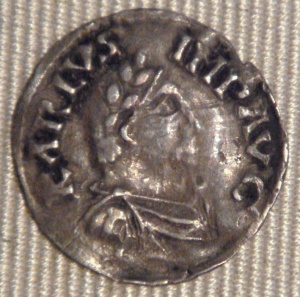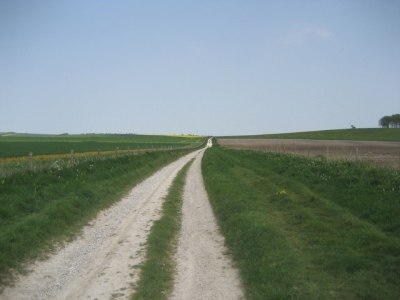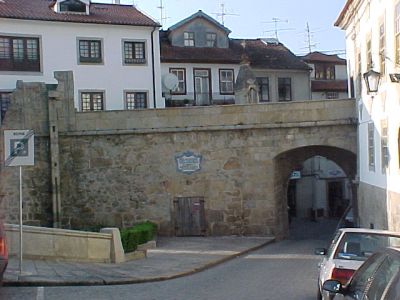As promised, the Bank Holiday bonus blog post is also about coins. I promise you only very minimal quantities of numismatics in the next post, but for now we’re still in my whirl of monetary study at the beginning of 2017. On 22nd February of that year, I did something that was already becoming a rarity, which was to head down to London to hear someone speak at the Earlier Middle Ages Seminar of the Institute of Historical Research, and as previously mentioned that someone was the Reverend Dr Simon Coupland and his topic was “New Light from Carolingian Coinage”, and this bears on enough things I care about that I wanted to write it up separately in old style.

Here at least is a Charlemagne denier I haven’t pictured before, in the Bibliothèque nationale de France’s Cabinet des Médailles, image by PHGCOM – own work by uploader, photographed at Cabinet des Médailles, Paris, licensed under CC BY-SA 3.0, via Wikimedia Commons
The reason there is new light to be shone, it turned out, is because the stuff keeps being discovered. Although the Carolingian coinage is still probably smaller in survival than its Merovingian predecessor, and there are still therefore questions about its actual use to settle—we’ll come back to that—the hoards corpus has trebled in size since Dr Coupland began his study of the subject, and weird and wonderful groupings keep turning up, especially in the border areas of the Empire where foreign coin didn’t get reminted at entry. Dr Coupland also has the kind of contacts that means he hears about the single finds that Continental antiquities laws tend otherwise to prevent coming to light. Who knows what has come up even while I haven’t been writing this paper up, indeed?1 So there were a number of big-ticket declarations he felt he could now make, and then some curiosities we have still to resolve.
Among the big-ticket items were things like:
- Charlemagne’s monogram coinage is found further from its mints than any preceding Carolingian coinage; whatever it is was that joined up his empire, it meant that his late money travelled further than the early stuff.2
- His son Louis the Pious, however, seems to have minted more coin per year than any Carolingian ruler before or after him; the latter fact was because the civil war between his sons seriously damaged the production and circulation of the currency and Charles the Bald’s reset of his coinage in 864 did not fully repair the situation even in the West (though if it had, we might conceivably not know, since coins from after that point are very hard to date).
- On the other side of the war of the Carolingian brothers, Emperor Lothar I seems to have lost control of his coinage somewhat: there seem to be a lot of Viking imitations, which may be because he had farmed out his biggest mint, Dorestad in Frisia, to a Viking warlord called Rorik and apparently Rorik’s moneyers didn’t much care what Lothar’s name was. This, however, raises the question whether the Frisian imitations of gold solidi of Louis the Pious are also Viking occupation productions, which against this background suddenly seems likely…3

Viking-made? An imitation of a gold solidus of Emperor Louis the Pious found in Aldingbourn area , Sussex, UK, 5th May 2019, Portable Antiquities Scheme SUSS-2A93DC, image licensed under CC-BY.
On the scale of smaller curiosities, we had observations like this:
- We now know that King Pepin III struck a very small portrait coinage, so that’s pretty much every mainline Carolingian with one now.
- On the same subject, we now have 47 examples of Charlemagne’s portrait coinage, and the persistently small number of them against the background of his wider coinage makes the question of what they were for still harder to answer, not least because we now have 362 of Louis the Pious’s; it seems clearer that the son of Charlemagne was keener on circulating his imperial image, so what was Charlemagne doing?4
- Hoards from around Dorestad continue to indicate the place’s major rôle as a clearing house for international economic contact even before the Vikings were running it, with not just now five hoards of Pepin III and quite a mixture of other Carolingiana but also now a small hoard of King Eanred of Northumbria…5
- Despite that, coins from Venice, which was in some ways outside the actual Empire, actually form as large a part of the single finds distribution as do coins from supposed no. 1 port Dorestad, so the high level of finds recovery from the Netherlands may be bending our picture somewhat.
- Two hoards from near the major Carolingian mint of Melle, meanwhile, add considerably to the confusion of what was going on in Aquitaine while it was contested between King Charles the Bald and King Pepin II of Aquitaine, as we now have one hoard each of coins in the name of Charles but with Pepin’s monogram (Dr Coupland’s ‘Poitou-Charente 2014’) and one of coins in the name of Pepin but with Charles’s monogram.6 Is it possible some kind of joint rule is reflected here, or was it just blundering, or mint officials trying to play it safe? Why did they have dies of both to mix up? And so on…
- Lastly, of many other snippets I could mention, a hoard of 2000 Temple-type coins of Lothar I from Tzimmingen gives us a robust die sample for the coinage and suggests that, if one accepts the infamous Metcalf multiplier of 10,000 coins usually struck per die, that this would have been a coinage of around 4,000,000 pieces.7 But of course, we should not accept the infamous Metcalf multiplier…8
You may get the impression that this paper was substantially composed of numismatic gossip, and you wouldn’t be all wrong about that, but behind all this, especially when one starts dealing with numbers like that, are bigger questions. Long ago now Michael Hendy argued that whereas Roman coinage had been primarily intended for tax and was run in the state interest rather than out of any concern for commerce, something in which he has been much disputed since, by the Carolingian era enabling trade was a primary concern of coin-issuing powers, not least because they didn’t really use coin for anything else, since the imperial tax system was gone and they raised troops on obligations relating to land, not by paying them wages.9 We might, now, have enough additional respect for the Carolingians’ estate management and desire to transport wealth in durable forms around their empire to suspect that they did, in fact, have at least some governmental uses for coin, and Hendy would probably not have denied that, but when we’ve got figures like these, and coins moving so far before then getting lost, as Metcalf managed to argue for the early Anglo-Saxon coinages, it seems like trade must be the bigger part of the answer. That raises its own questions about whether this relatively high-value silver coinage was actually very generally available or whether it was, effectively, a tool of professionals. That goes double when one factors in professional soldiery or banditry that might explain hoards in Viking territories, I suppose, but Dr Coupland would argue for a trading factor there too, and I think Mark Blackburn would have agreed with him.10

Silver denier of Emperor Louis the Pious struck at Venice in 819-822, CNG Coins 407389, ex Coin Galleries sale, 14 November 2000, lot 576
As Rory Naismith raised in questions, the place that doesn’t fit into this picture as one would expect is Italy, part of the Carolingian realms at least down to Rome and sometimes further from 774. While it’s probably not ideal metal detector territory for much of its surface, Italy is nevertheless pretty thoroughly archaeologically surveyed and dug, and yet, as Alessia Rovelli has repeatedly argued, the finds of coins from the Carolingian era are way fewer than from the Roman, Byzantine and even Lombard eras before it.11 She has therefore concluded that the Carolingians didn’t really strike much coin in Italy, and yet beyond the Alps Venice and Milan are major parts of the sample. If those mints were primarily striking for what turned out to be export, it’s hard to argue that this was a coinage for the market, when Italy’s concentration of cities even then should have provided a much more urgent market context than the other side of the Alps. In this respect, at least, this coinage looks like a tax one, a point made on this occasion by Caroline Goodson, in which case why does it look like a trading one inside Frankish territories? For Dr Coupland this was probably something do with the finding circumstances, but an alternative might be that Italy was something of a colonised territory under the Carolingians, from which they extracted wealth that was really only being spent in the heartland, whereafter it spread more normally. But what was Italy doing for money in its own markets if that was so? There is a bigger answer needed here if it is to contain all this evidence, but of course, one has to know what the evidence is. Certainly, the audience of this paper had to ask their questions differently by the end of it from how they would have at the beginning, such was the new evidence presented. As you can tell, I am still thinking with it now, and now, after much delay, so can you!
1. Dr Coupland has been trying to keep track of this for a while: see Simon Coupland, “A Checklist of Carolingian Coin Hoards 751-987” in Numismatic Chronicle Vol. 171 (London 2011), pp. 203–256, on JSTOR here; idem, “A Supplement to the Checklist of Carolingian Coin Hoards, 751-987”, ibid. Vol. 174 (London 2014), pp. 213–222, on JSTOR here; idem, “Seven Recent Carolingian Hoards”, ibid. pp. 317–332, on JSTOR here; idem, “A Hoard of Charles the Bald (840-77) and Pippin II (845-8)”, ibid. Vol. 175 (London 2015), pp. 273–284, and Simon Coupland and Jens Christian Moesgaard, “Carolingian Hoards”, ibid., pp. 267–272, are just the ones I easily have reference to; I suspect there are more…
2. See now Simon Coupland, “The Formation of a European Identity: Revisiting Charlemagne’s Coinage” in Elina Screen and Charles West (eds), Writing the Early Medieval West: studies in honour of Rosamond McKitterick (Cambridge 2018), pp. 213–229.
3. See Simon Coupland, “Recent Finds of Imitation Gold Solidi in the Netherlands” in Numismatic Chronicle Vol. 176 (London 2016), pp. 261–269.
4. Simon Coupland, “The Portrait Coinage of Charlemagne” in Rory Naismith, Martin Allen and Elina Screen (edd.), Early Medieval Monetary History: Studies in Memory of Mark Blackburn (Farnham 2014), pp. 145–156.
5. For a view predating these recent finds, see Simon Coupland, “Boom and Bust at 9th-century Dorestad” in Annemarieke Willemsen and H. Kik (edd.), Dorestad in an International Framework: New Research on Centres of Trade and Coinage in Carolingian Times (Turnhout 2010), pp. 95–103.
6. This is presumably that covered in Coupland, “A Hoard of Charles the Bald (840-77) and Pippin II (845-8)”, and I guess the other one is in either idem, “A Checklist of Carolingian Coin Hoards” or idem, “A Supplement to the Checklist of Carolingian Coin Hoards”.
7. Metcalf in D. M. Metcalf, “How Large was the Anglo-Saxon Currency?” in Economic History Review 2nd Series Vol. 18 (London 1965), pp. 475-482, on JSTOR here, but for a statistical sanity check of the methods (which basically aren’t sane) see Warren W. Esty, “Estimation of the Size of a Coinage: a Survey and Comparison of Methods” in Numismatic Chronicle Vol. 146 (London 1986), pp. 185–215, on JSTOR here.
8. See for a final word on this, at least as it should have been, S. E. Buttrey and T. V. Buttrey, “Calculating Ancient Coin Production, Again” in American Journal of Numismatics Vol. 9 (Washington DC 1997), pp. 113–135.
9. Michael F. Hendy, “From Public to Private: The Western Barbarian Coinages as a Mirror of the Disintegration of Late Roman State Structures” in Viator Vol. 19 (Turnhout 1988), pp. 29–78, DOI: 10.1484/J.VIATOR.2.301364.
10. Obviously there are the important methodological cautions of Philip Grierson, “Commerce in the Dark Ages: A Critique of the Evidence” in Transactions of the Royal Historical Society 5th Series Vol. 9 (London 1959), pp. 123–140, on JSTOR here, which I do love to cite still, but against it in this context see D. M. Metcalf, “Viking-Age Numismatics 4: The Currency of German and Anglo-Saxon Coins in the Northern Lands” in Numismatic Chronicle Vol. 148 (London 1998), pp. 345–371, on JSTOR here, and idem, “English Money, Foreign Money: The Circulation of Tremisses and Sceattas in the East Midlands, and the Monetary Role of ‘Productive Sites'” in Tony Abramson (ed.), Studies in Early Medieval Coinage 2: New Perspectives (Woodbridge 2011), pp. 15–48.
11. Alessia Rovelli, “Coins and Trade in Early Medieval Italy” in Early Medieval Europe Vol. 17 (Oxford 2009), pp. 45–76.







